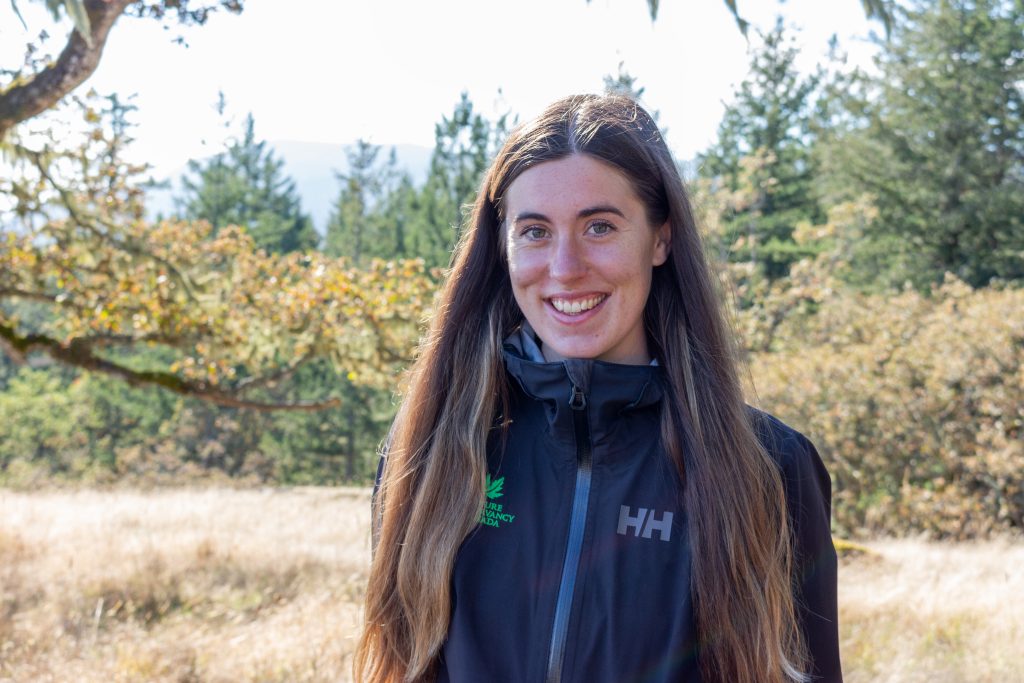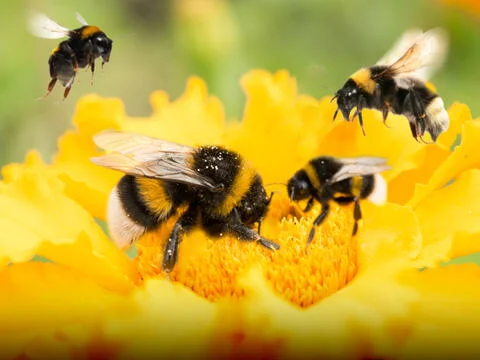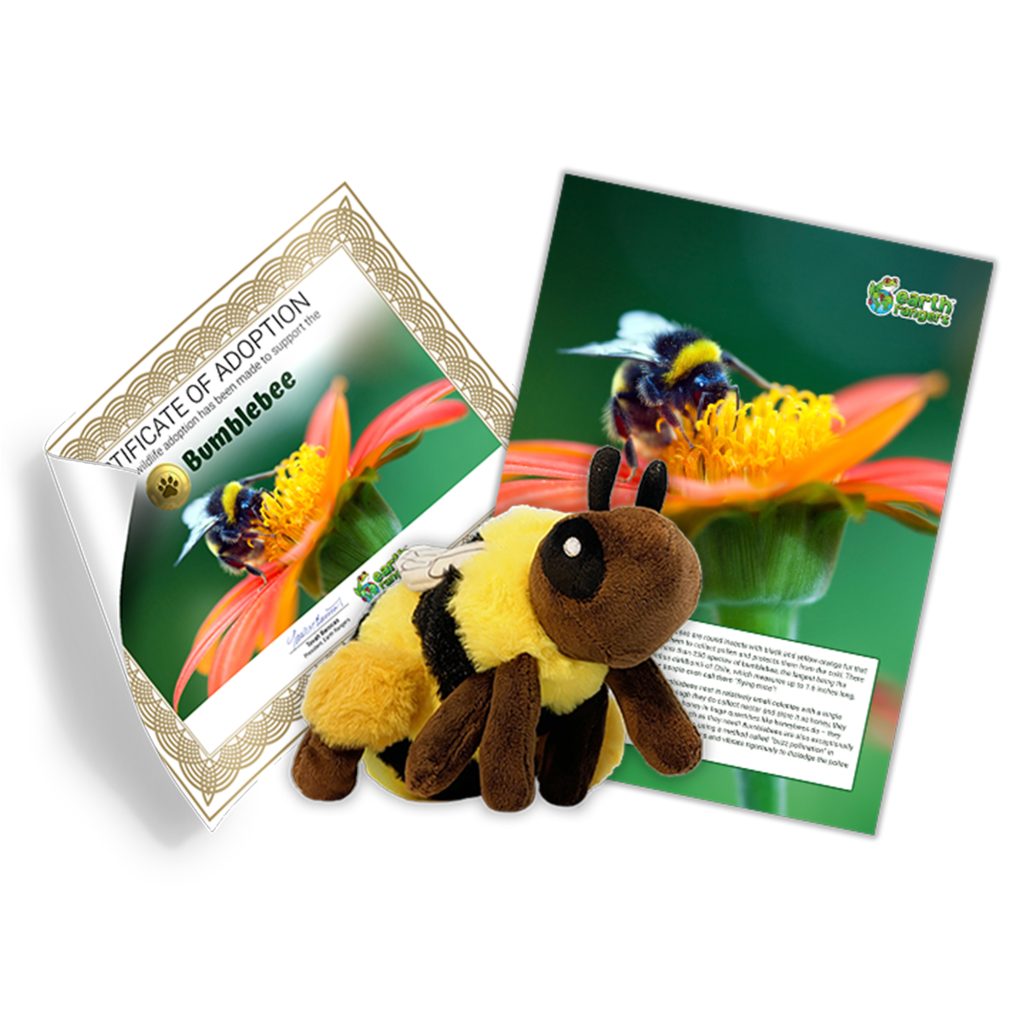
Hi, Earth Rangers! My name is Sarah Bayliff and I work for the Nature Conservancy of Canada (NCC) as the BC Interior Program Manager. I’m currently in the Bunchgrass Hills Conservation Area, a vast landscape of native grasslands, forests, and wetlands south of Kamloops in British Columbia. I’m helping to protect this vital wildlife corridor, as well as the creatures that live there — including the bumblebee!
Bumblebees are round insects with black and yellow-orange fur that helps them to collect pollen and protects them from the cold. There are more than 250 species of bumblebee, the largest being the Bombus dahlbomii of Chile, which measures up to 1.6 inches long. Some people even call them “flying mice”!
Most bumblebees nest relatively small colonies with a single queen. Although they do collect nectar and store it as honey, they don’t produce honey in huge quantities like honeybees do – they make only as much as they need! Bumblebees are also exceptionally efficient pollinators, using a method called “buzz pollination” in which they grab flowers and vibrate rigorously to dislodge the pollen in large amounts. They gather nectar and pollen from a wide variety of flowers, as well as crop plants like tomatoes, eggplants, and squash.

With their large size and hairy coats, bumblebees can fly in much cooler temperatures than other bees. They can even warm themselves up by shivering their flight muscles! This allows them to pollinate plants in mountain habitats, coastal plains, and even arctic tundra. Compared to many other flying creatures, bumblebees can fly with incredible control. They can fly long distances, hover in mid-air, and aren’t bothered by strong winds or high altitudes. They’re also fast – a bumblebee can fly the length of a football field in 30 seconds!
Unfortunately, these amazing insects are threatened by habitat loss, disease, and toxic pesticides. Many species of bumblebee are at risk or endangered, including the yellow bumblebees and western bumblebees found at Bunchgrass Hills. That’s why we have to do all we can to protect them and their habitats. Fortunately, the Bunchgrass Hills Conservation Area offers healthy habitats for bumblebees and other wildlife, and I’m doing all I can to keep it that way.
Want to help out? You can sponsor my work by visiting the Adoptions section in the Earth Rangers App or check out the Earth Rangers Shop to get your Bumblebee Adoption Kit!


What the heck that bee is giant!
Bees are very important without them no plants or food would grow some animals may go instinct